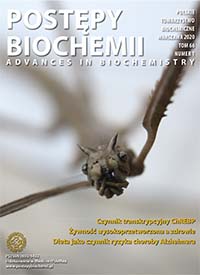The role of ethylene and transcriptome alterations in response to hypoxia stress in plants
DOI:
https://doi.org/10.18388/pb.2020_307Abstract
Hypoxia in plants is a usually the result of heavy rainfall and the subsequent flooding. All current climate models indicate a notable increase in extreme weather over the coming years. Depending on the species and geographical location, plants have developed two distinct strategies for hypoxia stress adaptation: escape and quiescence. The escape strategy involves rapid growth of part of the shoot above the water level wheÂreas the second strategy requires a significant reduction in the metabolic rate of the plant in order to survive until the negative environmental conditions pass. These processes are primarily regulated by ethylen in addition to the transcription factor, ERF (ethylen response factor), which enables the transcription of hypoxia response genes. These processes are primarily regulated by ethylen in addition to the transcription factors, ERFs (ethylen response factors), which enables the transcription of hypoxia response genes. Most ERF genes are constitutively transÂcribed independently of oxygen concentration. However, post-translational modification of the N-terminus of ERFs leads to their degradation in plants growing under physiological conditions. During hypoxia there is an increase in the expression level of genes associated with carbon, nitrogen, glycolysis or anaerobic respiration. However, as shown by studies using ribosome profiling, in order to save energy, plants under hypoxic stress strongly inhibit the process of initiating translation. The regulation of gene expression under stress conditions is also influenÂced by the accumulation of poly(A) RNA in the cell nucleus and cytoplasmic stress granules.
Downloads
Published
Issue
Section
License
All journal contents are distributed under the Creative Commons Attribution-ShareAlike 4.0 International (CC BY-SA 4.0) license. Everybody may use the content following terms: Attribution — You must give appropriate credit, provide a link to the license, and indicate if changes were made, ShareAlike — If you remix, transform, or build upon the material, you must distribute your contributions under the same license as the original. There are no additional restrictions — You may not apply legal terms or technological measures that legally restrict others from doing anything the license permits.
Copyright for all published papers © stays with the authors.
Copyright for the journal: © Polish Biochemical Society.




